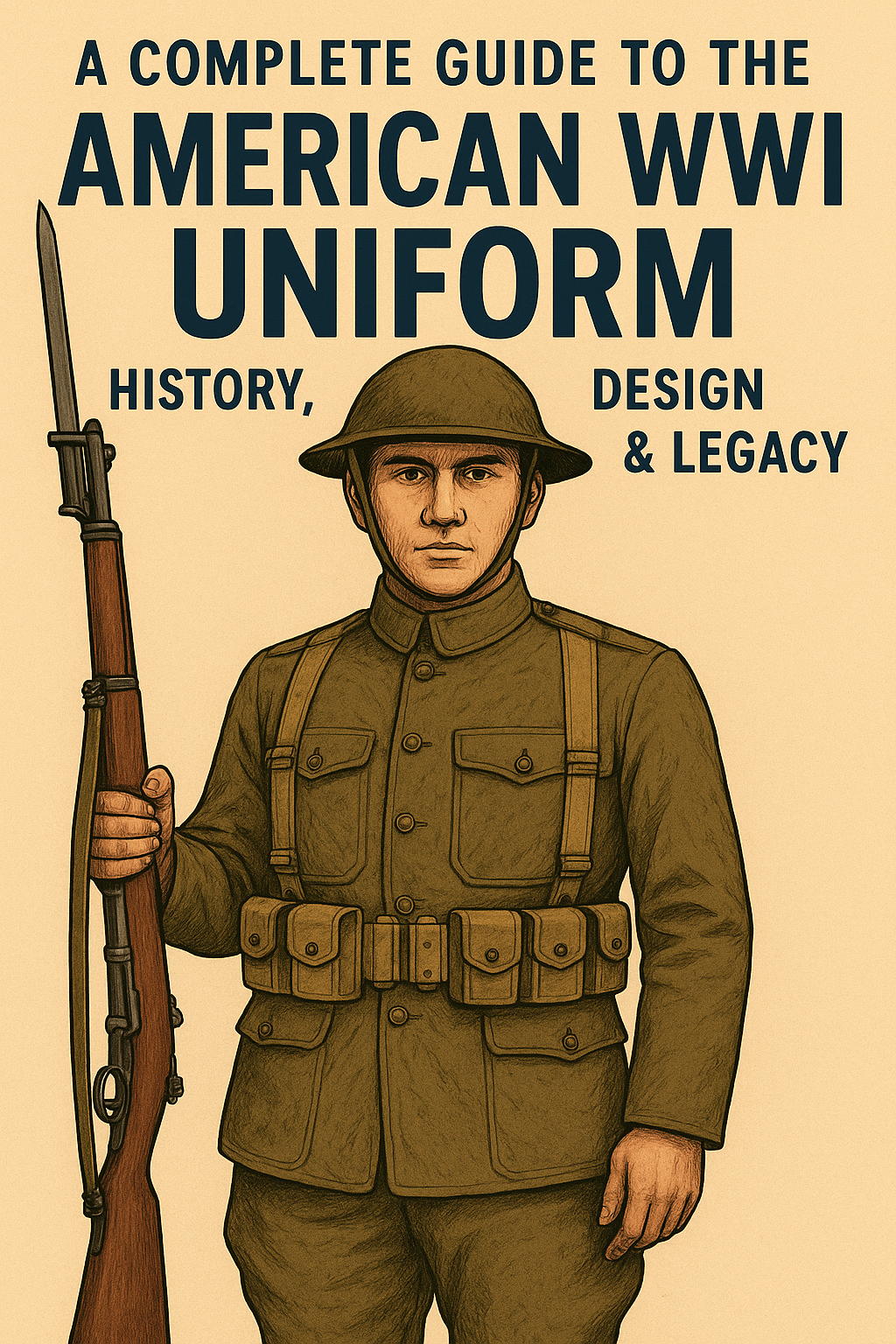
A Complete Guide to the American WW1 Uniform: History, Design & Legacy
Published on Jun 02, 2025
A Complete Guide to the American WW1 Uniform: History, Design & Legacy
The First World War was a turning point in military history, not only in tactics and technology but also in uniform design. The American WW1 uniform is a powerful symbol of the United States emergence as a global power and a tribute to the soldiers who served with distinction. In this guide, we take a comprehensive look at the WW1 American uniform, tracing its origins, components, functionality, and legacy.
Origins of the WW1 US Uniform
When the United States entered World War I in 1917, the U.S. military faced the massive task of rapidly outfitting over four million service members. Drawing on existing designs from the Spanish American War uniforms and even some European influences, the U.S. Army developed a uniform that was practical, durable, and adaptable to the harsh conditions of trench warfare.
Key Features of the WW1 American Uniform
The WW1 US uniform was composed of several standard components, each designed for functionality and ease of mass production. Here's a breakdown of the core elements:
1. Tunic (Service Coat)
- Made of heavy wool serge
- Olive drab color (initially khaki, but switched for better camouflage)
- Four pockets with flap and button closures
- Stand-and-fall collar design
2. Trousers
- Wool construction
- Reinforced seat and knees
- Laced at the bottom to fit inside puttees or leggings
3. Headgear
- Campaign hat early in the war, replaced later with the British-style steel helmet (M1917)
- Helmets were essential for trench warfare
4. Puttees and Leggings
- Wound cloth strips or canvas leggings
- Provided ankle support and protection against mud
5. Footwear
- Russet leather trench boots
- Designed for the wet and cold conditions of Europe
6. Field Gear and Accessories
- Web gear and belts for ammunition, canteens, bayonets
- Gas mask bag and first aid pouch
Evolution from Previous and Future Designs
The WW1 American uniform marked a transition from the more ornate and less practical Spanish American War uniforms. That earlier style included dark blue wool coats and brass buttons, more suitable for parade than for the battlefield.
In contrast, the WW1 version emphasized:
- Functionality over form
- Earth tones for camouflage
- Lightweight and durable fabrics
This evolution continued into WWII with further refinements. The WWII tanker uniform, for example, was a direct response to mechanized warfare. It featured a leather or wool jacket, pants with suspenders, and high-grip boots tailored for life inside tanks.
Influence on Modern Uniforms
The influence of the WW1 uniform persists today. Elements like the army service uniform tie, introduced later, still carry echoes of the early 20th-century designs. The tie represents discipline and uniformity, even in today's more modern and versatile military dress codes.
Cultural Significance and Symbolism
The WW1 US uniform became a lasting symbol of courage and patriotism. Soldiers wore insignia indicating their unit, rank, and service branch. Patches and badges added layers of personal and historical significance.
Collectors and historians often seek out these uniforms not just for their aesthetic value but for the stories they carry. Each button, stitch, and patch tells a part of the broader narrative of America's role in the "Great War."
Related Historical Uniforms
Spanish American War Uniforms
These older uniforms were precursors to the WW1 uniform, with notable differences:
- Dark blue wool coats
- Gold braid and brass insignia
- Primarily symbolic of America's early military expansion
German WWII Winter Uniform
To understand the global context of uniform development, one can also look at the German WWII winter uniform:
- Made for harsh Eastern Front conditions
- Padded and insulated with fur or synthetic materials
- Showed the necessity of adapting gear to specific environments
Care, Collection, and Reenactment
Authentic WW1 American uniforms are highly collectible. Reproductions are also popular among reenactors and educational organizations. If you own or are interested in these uniforms:
- Store them in cool, dry places
- Avoid direct sunlight and moisture
- Use acid-free boxes for long-term preservation
Where to Find Authentic Reproductions
If you're looking to own a piece of history, platforms like Paddelaters.com offer high-quality reproduction uniforms and accessories. Whether you're a collector, historian, or reenactor, it's a one-stop-shop for:
- WW1 US uniform reproductions
- Spanish American War attire
- WWII tanker gear
- Modern military accessories like the army service uniform tie
Final Thoughts
The WW1 American uniform is more than fabric and thread—it's a wearable testament to bravery, innovation, and a pivotal moment in world history. From its roots in the Spanish American War uniforms to its influence on modern dress, the legacy of the WW1 US uniform continues to shape how we view military heritage today.
For more information and authentic military apparel, visit Paddelaters.com and explore a carefully curated selection that honors our shared history.
